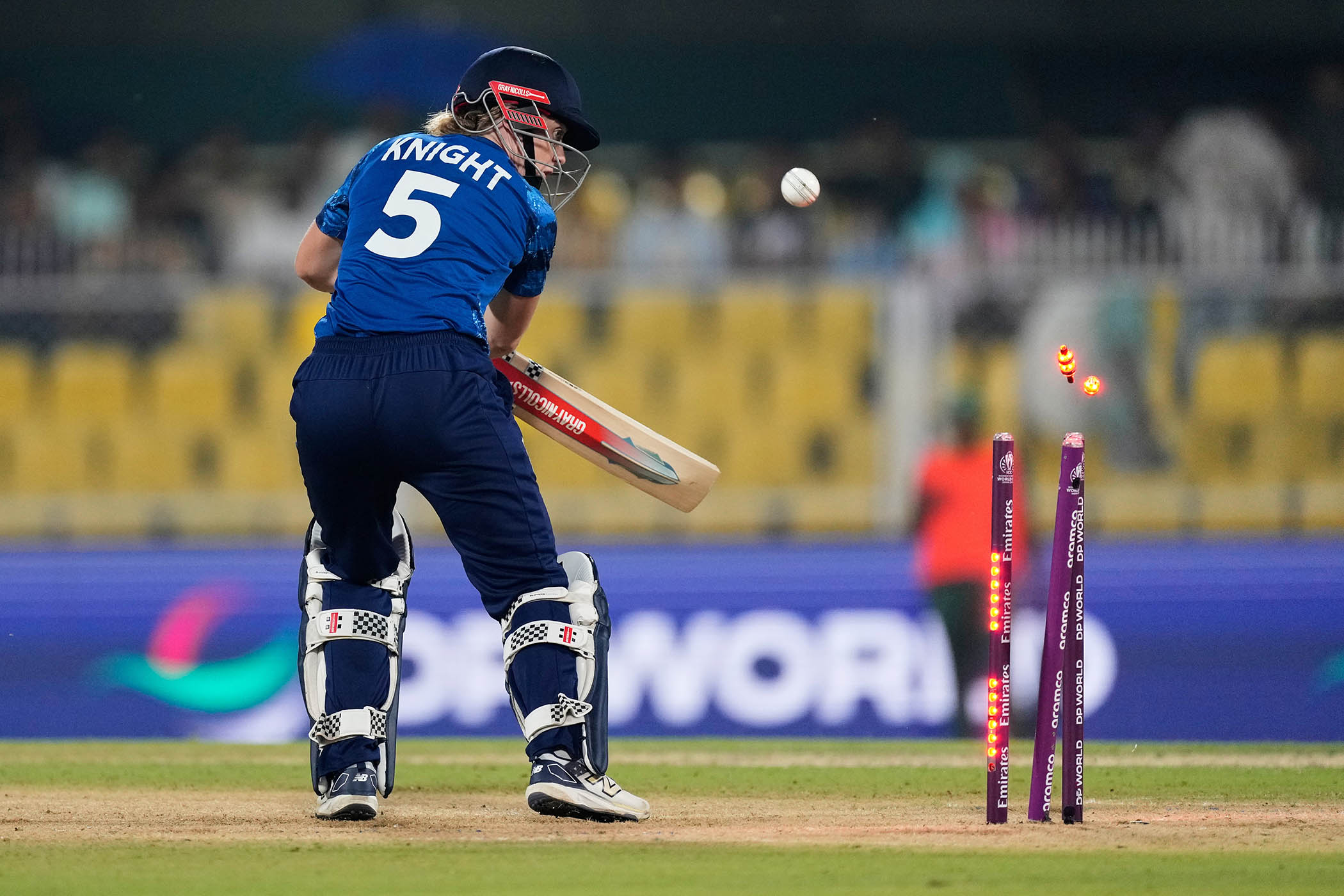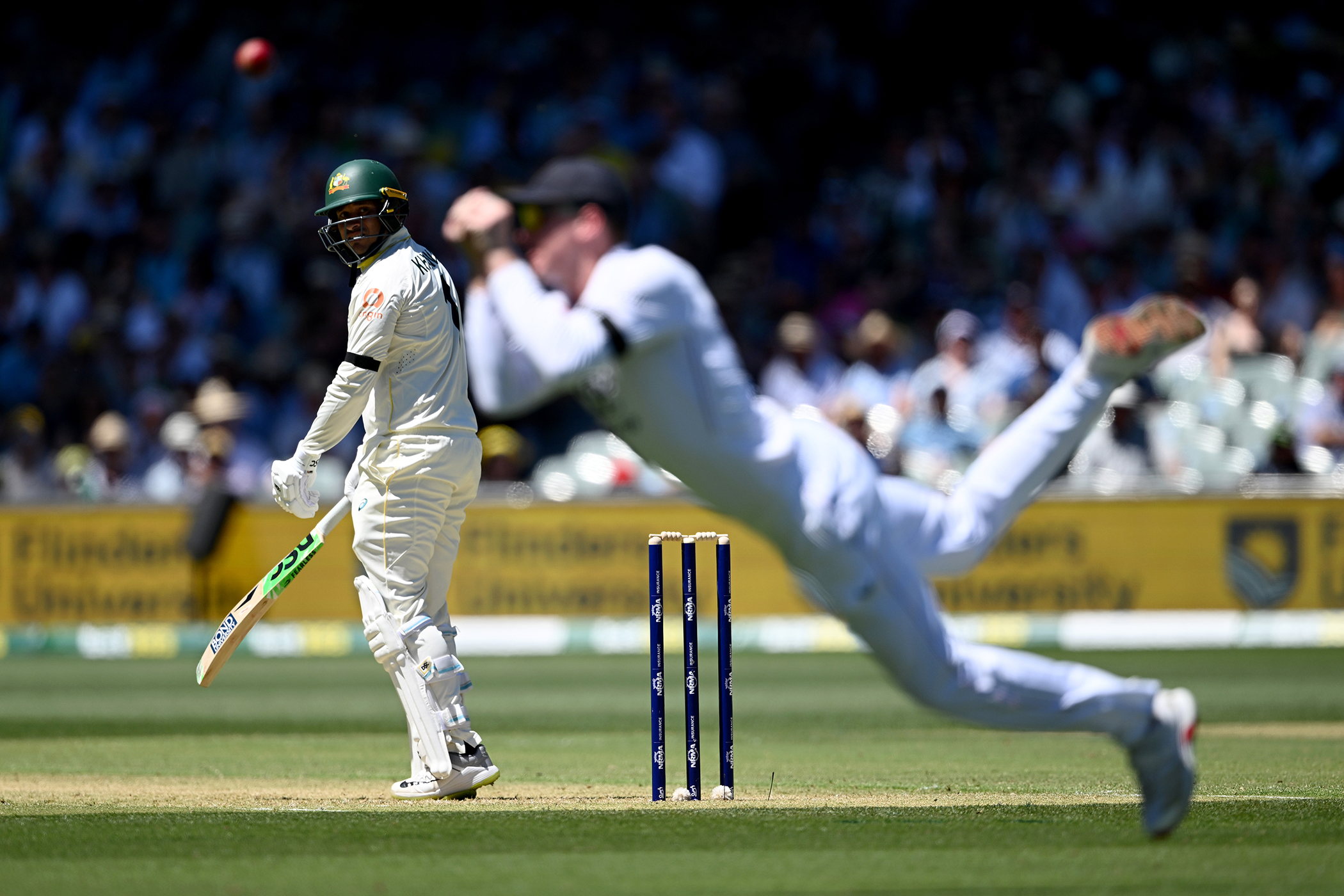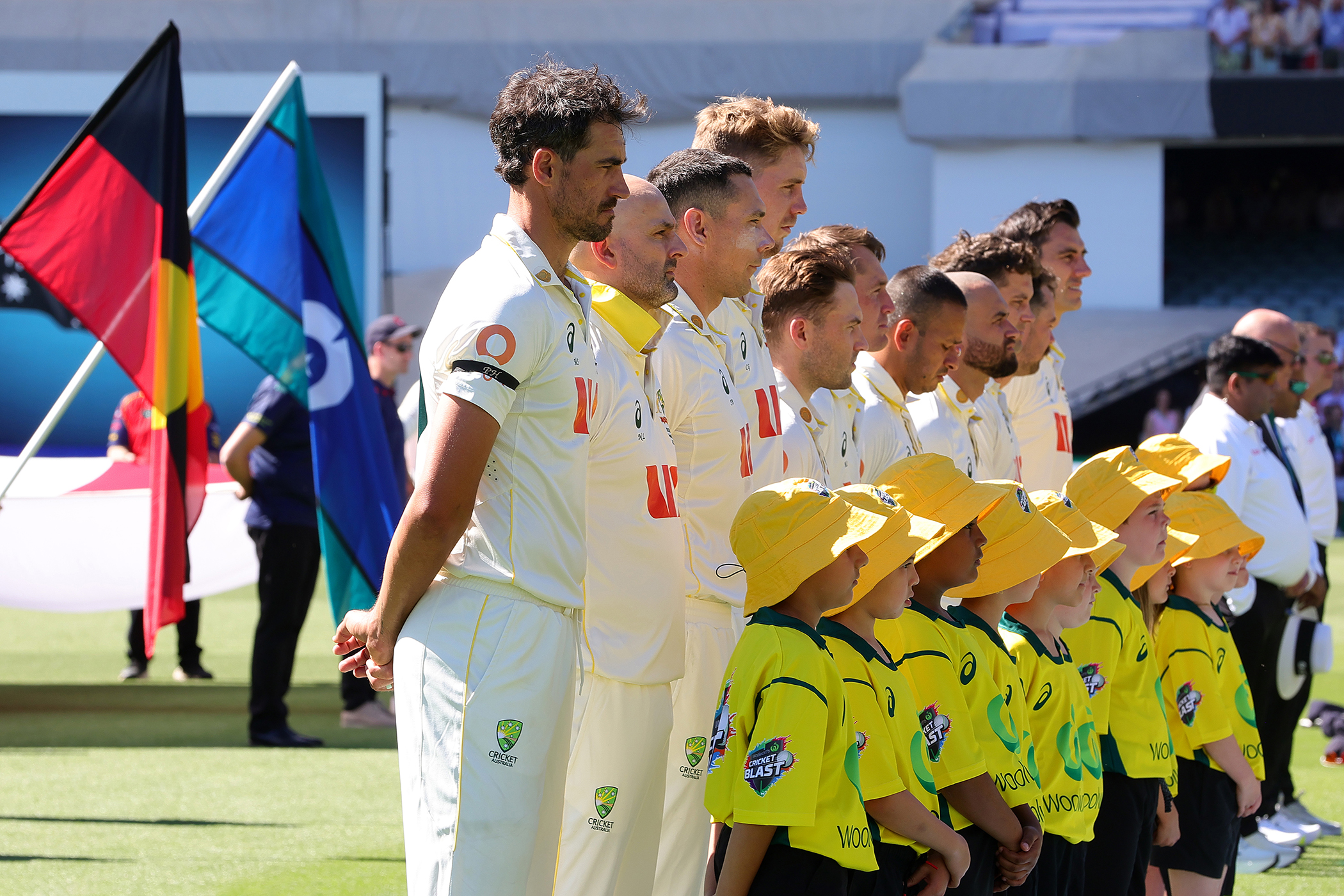There is no space for England’s cricketers among the crackers at the Red Roses and Lionesses celebration table.
After making three of the past four ODI World Cup finals and winning two, England’s crushing semi-final defeat by 125 runs under the inspired boot of South Africa has left them picking their teeth disconsolately in the kitchen.
It was the combination of Laura Wolvaardt’s majestic 169, and Marizanne Kapp’s five wickets which whipped the tablecloth away at Guwahati. If a chase of 320 for victory had seemed unlikely at the start, it was pure fantasy after seven balls of England’s innings, with the scoreboard reading one for three. England may have obediently fed Wolvaardt’s favourite cover drive – and how sweetly she struck them – but they were simply outclassed.
With barely seven months before the T20 World Cup appears on the skyline, there is much for coach Charlotte Edwards to ponder.
In the tick box: an unalloyed improvement from last winter. Under stress, the wheels, generally, stayed on. The players are fitter, held their catches. The spinners were on point, Linsey Smith proved an excellent powerplay hunch, Lauren Bell held the line as the only out-and-out pace bowler. England are playing with more purpose, “more structure in our methods”, as captain Nat Sciver-Brunt put it.
Related articles:
On the could-do-better pile: the middle order. Sciver-Brunt and Heather Knight cannot rescue every innings and, alongside Amy Jones, Tammy Beaumont and Danni Wyatt-Hodge, are unlikely to be in place in four years. Edwards admitted as much: “This is the end of an ODI cycle. We’ve got to look at the future now.”
Her hope is that the revamped domestic competition, and the expectation that everyone will play in it, pays dividends. Nervous times for young players like Sophia Dunkley and Emma Lamb – Edwards, as the dropped Kate Cross would tell you, isn’t afraid of making hard decisions.
England’s World Cup win at Lord’s in 2017 was a game changer for women’s cricket in the UK. It earned a bigger profile, more money, double headers – yet on the international stage, England continue to tread water. Australia, despite losing in the semi-finals, look as far away as ever, while creeping up on the inside are South Africa and India, who overturned the odds to reach the final.
India, runners up in 2017, have their moment – a home final today after a Jemimah Rodrigues-inspired and record-breaking run-chase to foil Australia with nine balls to spare.
“The semi-final was like the Harmanpreet match in 2017 [when Harmanpreet Kaur’s 171 from 115 balls helped beat Australia in the semi-final] but with 10 times the pressure and all the history in between,” said Sharda Ugra, who has covered Indian cricket for more than 30 years.
“The women’s game in India has leapt ahead of where people thought it was. The characters are there, the game is booming and you don’t realise until a moment like that the rate at which it has grown.
“People talk about 2017 but women’s cricket was totally under the radar then. Now every male cricket fan watching is going to say that was some performance.”
The magnitude of India’s achievement in turning over Australia cannot be overestimated. As well as being up against some of the greatest cricketers in the world, India were fighting what cricket writer Melinda Farrell brilliantly coined “inter-generational confidence” – born out of consistent success. But under pressure from a nerveless Rodrigues and Harmanpreet, Australia finally cracked, catches doing down and fielding going awry.
There will be a new name on the trophy today. And even if India don’t win, the game is changed.
Photograph by AP Photo/Anupam Nath


